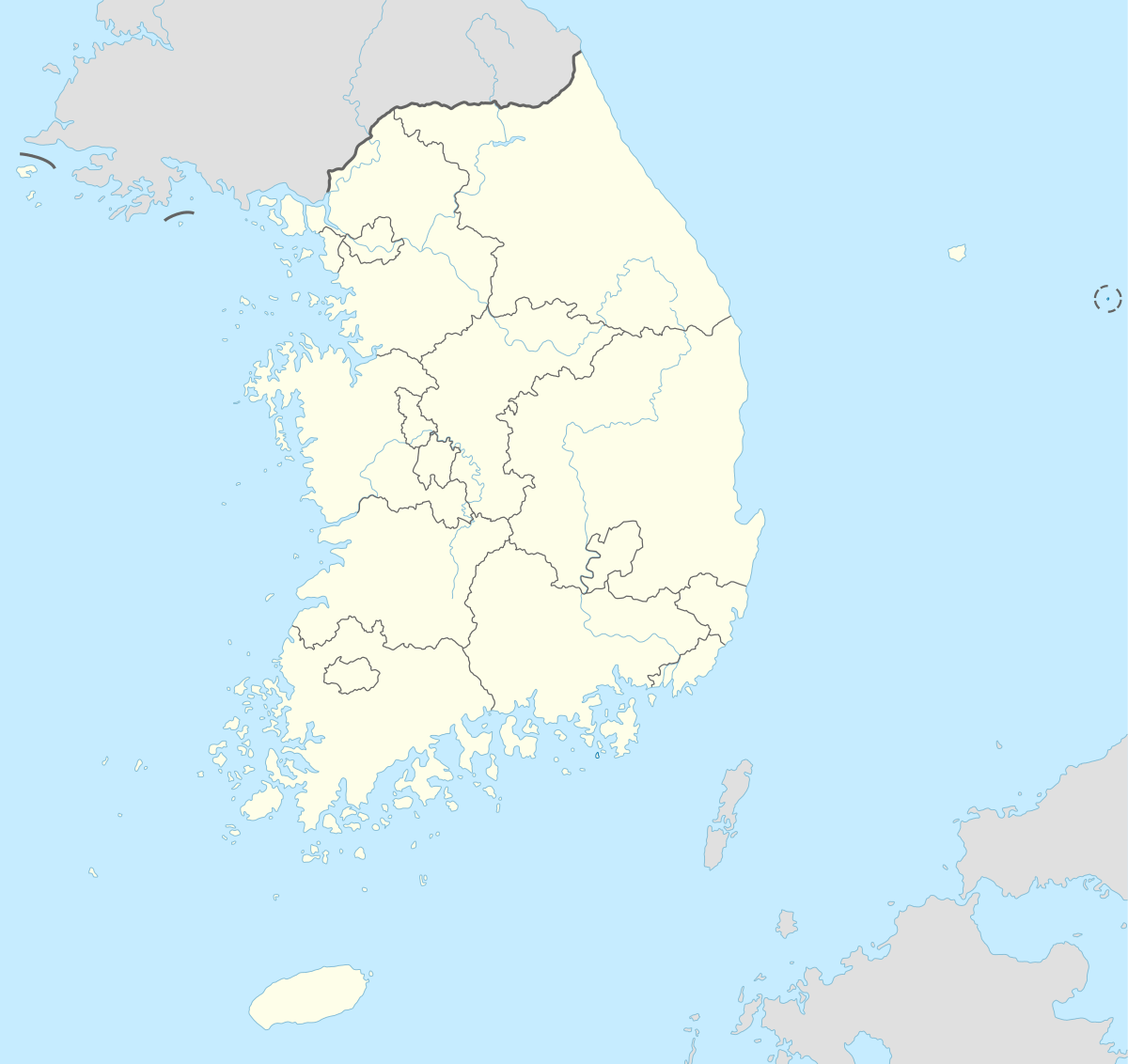Yongmunsa
| Yongmunsa | |
|---|---|
| 용문사 | |
5_%EA%B0%80%EC%9D%B4%EB%93%9C%EB%A7%B5.jpg) Yongmunsa Temple in South Korea | |
 Shown within South Korea | |
| Basic information | |
| Location | 782 Yongmunsan-ro Yongmun-myeon Yangpyeong-gun Gyeonggi Province (Korean: 경기도 양평군 용문면 용문산로 782) |
| Geographic coordinates | 37°33′00.5″N 127°34′15.9″E / 37.550139°N 127.571083°ECoordinates: 37°33′00.5″N 127°34′15.9″E / 37.550139°N 127.571083°E |
| Affiliation | Jogye Order of Korean Buddhism |
| Country | South Korea |
Yongmunsa is a Buddhist temple of the Jogye Order in Yangpyeong, South Korea.
History
A Temple that Aided the Founding of Two Dynasties
Yongmunsa Temple (Korean: 용문사, Chinese: 龍門寺, Pronounced “Yong-mun-sa”) was established in 913 by Ven. Daegyeong. There is another story that Crown Prince Maui, the last prince of the Unified Silla Dynasty, established the temple. Originally from Nampo in the Baekje region, Ven. Daegyeong was ordained at Muryangsa Temple and learned Seon meditation from Ven. Muyeom Hwasang.
Later he went to Tang China and received the Dharma from Ven. Ungeo Doeung (雲居道膺; aka. Yunju Daoying). Upon his return to Korea, he lived in seclusion on Mt. Sobaeksan. One day, King Taejo, founder of the Goryeo Dynasty, visited Ven. Daegyeong and listened to his Dharma talk. He was so impressed that he invited the monk to Borisa Temple in Yangpyeong, probably today’s Yongmunsa (which is also in Yangpyeong, Gyeonggi-do Province).
No records from the Goryeo era exist about Yongmunsa Temple, but references to it began to appear in records from the founding of the Joseon Dynasty. In an inconspicuous place on the eastern slope of a mountain east of the temple, stand the stupa and stele of National Preceptor Ven. Jeongji Guksa (aka Chugwon). Originally from Jaeryeong in Hwaghae-do Province, the preceptor went to Yenching, China, together with his Dharma brother, Ven. Muhak Daesa, and visited venerables Zhikong and Naong at Fayuansi (法源寺) Temple. Later he studied under Ven. Naongand and died in 1338. After his cremation, countless relics (śarīra) of great brilliance were collected. King Taejo bestowed on him the posthumous title Jeongji Guksa, and had Gwon Geun, an esteemed writer of the time, write an epitaph to be inscribed on his stele.
In 1447, Prince Suyang reconstructed the Main Buddha Hall (Daeung-bojeon), under the royal decree of King Sejong, for his mother, Queen Consort Soheon. Prince Suyang supported the renovation of Yongmunsa Temple even after being crowned King Sejo. The temple underwent many reconstructions after this. Around 1907, when King Sunjong of the Korean Empire was enthroned, Japan’s forced disbanding of the Korean army provoked action by a Korean militia. As Yongmunsa Temple was used as the militia’s headquarters, the Japanese army burnt it down.
Cultural properties
The Largest Ginkgo biloba in Asia
Most of the buildings now at Yongmunsa Temple were reconstructed after 1909. However, its enormous gingko tree (the largest in Asia; Natural Monument No. 30), estimated to be 1,100 to 1,500 years old, testifies to the temple’s history. The gingko tree is 42 meters (138 feet) high and 14 meters (46 feet) in circumference at the base. It yields 100 straw bags of gingko nuts every year.
The temple’s Gilt-Bronze Seated Avalokitêśvara (Treasure No. 1790) features the characteristics of 14th century Buddha statues, and thus was likely produced when Ven. Jeongji Guksa lived at Yongmunsa Temple in the transition period from Goryeo to Joseon. His stupa and stele (Treasure No. 531) showcase the simple but graceful style of the early Joseon era, as do the stupa of Ven. Zhikong at Hoeamsa Temple and those of Ven. Naong and Ven. Muhak.
2.jpg)
3_%EA%B8%88%EB%8F%99%EA%B4%80%EC%9D%8C%EB%B3%B4%EC%82%B4%EC%A2%8C%EC%83%81.jpg)